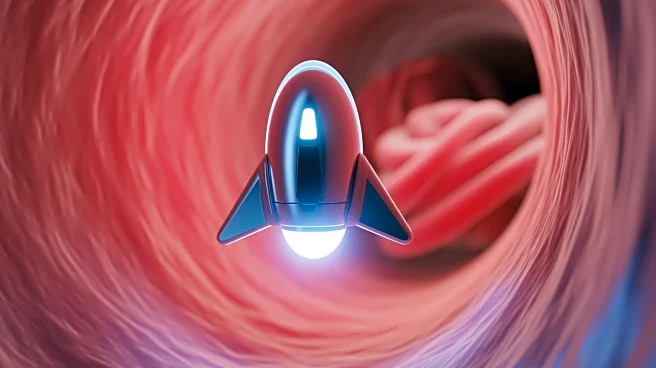What's Happening?
Researchers at ETH Zurich have developed microrobots capable of swimming through blood vessels to deliver drugs directly to targeted sites. These robots, the size of a grain of sand, are guided by magnetic
fields and dissolve after delivering their payload, minimizing toxic side effects associated with systemic drug therapies. The technology has been tested in pigs and sheep, demonstrating precision in drug delivery to specific locations within the body. The microrobots could potentially be used to treat conditions like stroke-causing blockages or brain tumors, offering a promising alternative to conventional drug delivery methods.
Why It's Important?
This innovation addresses a significant challenge in drug development, where many drugs fail due to toxicity. By enabling precise delivery of smaller drug doses, the microrobots could reduce side effects and improve treatment efficacy. The technology represents a significant advancement in medical robotics, with potential applications in various fields, including oncology and neurology. If successful in human trials, it could revolutionize drug delivery, offering safer and more effective treatments for complex medical conditions.
What's Next?
Further studies are needed to assess the safety and efficacy of the microrobots in human trials. Researchers aim to refine the technology and explore its applications in different medical scenarios. If successful, the microrobots could be integrated into clinical practice within the next five to ten years, transforming drug delivery and patient care.
Beyond the Headlines
The development of microrobots highlights the growing intersection of robotics and medicine, showcasing the potential for innovative solutions to longstanding medical challenges. The use of biocompatible materials ensures the technology's safety, paving the way for broader acceptance and integration into healthcare systems.












